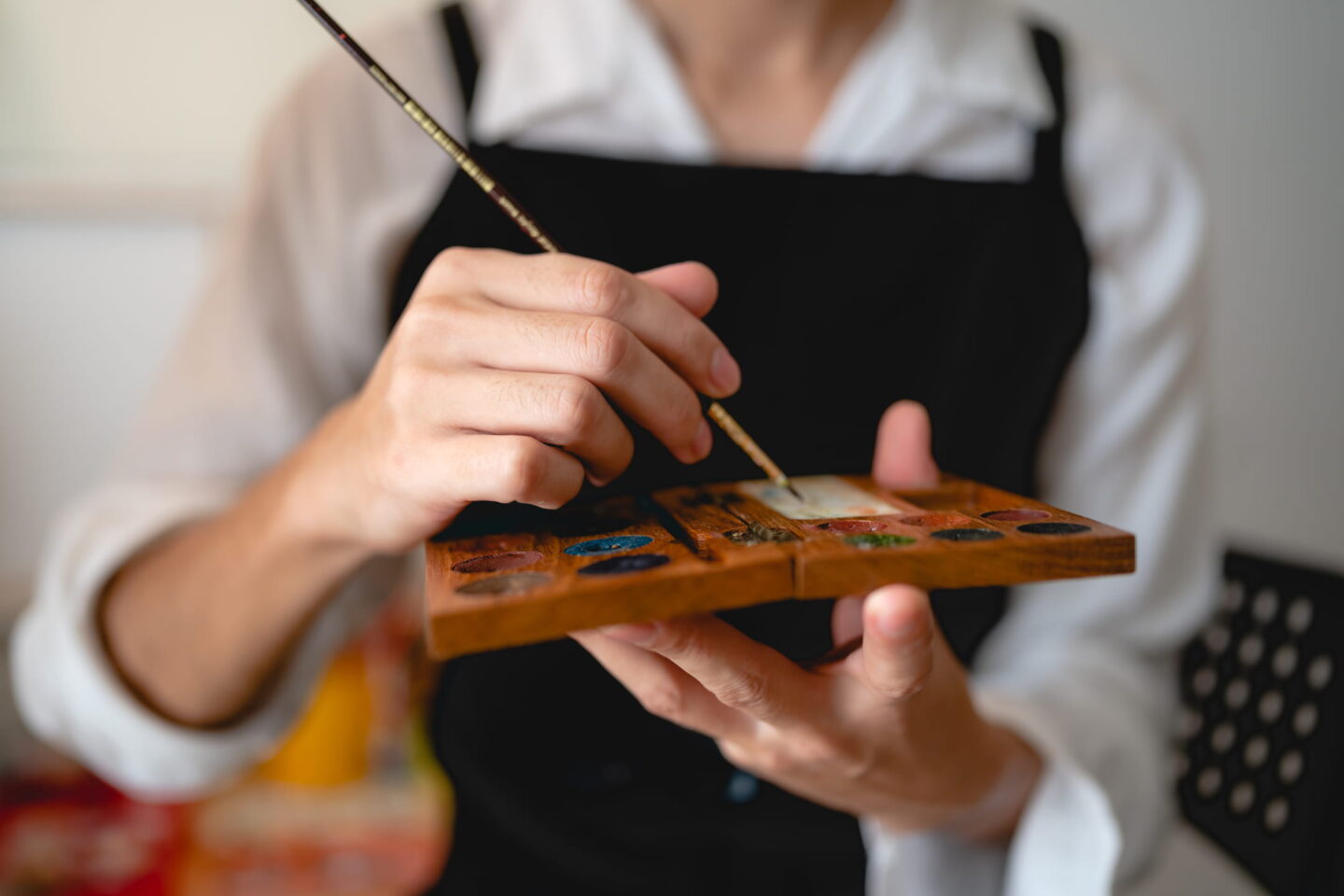Art is the expression or application of human creative skill and imagination. It can take the form of painting, drawing, sculpture, architecture, photography, dance, literature, poetry, drama, music, or any other medium. Abstract art is a type of art that uses simple colors and shapes to create a complex image. The basics of abstract art are easy to learn and with a little practice, anyone can create beautiful abstract paintings.
Art is everywhere.
The definition of art: what is it?
The history of art: where did it come from?
The different types of art: painting, sculpture, music, etc.
The benefits of art: why is it important?
The importance of art in society: how does it affect us?
Art is a vital part of our world.
Art is the expression of an artist’s talent. It can be a painting in a gallery or a performance by a musician or ballet dancer.
Pablo Picasso was one of the most famous artists of the 20th century. He was known for his use of color and brushstrokes. His paintings are found in galleries all over the world.
Talented artists can bring joy to people’s lives. Their art can make us laugh, cry, or think about life in new ways. We are lucky to have so much art in our world.
How to become the most famous and in demand artist? Let’s see what seasoned artists say to aspiring artists.Of course, you can’t be a successful artist without skill, a love of art, or a desire to create. But even one of these talents isn’t enough for your photos to be displayed in the world’s best museums.
To create this article, I consulted professional artists who are finding buyers for their paintings and acquiring talent. Yes, imagine they exist in real life. Here’s what the pros have to say if you want to be an artist.
Tip 1: Learn the Basics
All sciences and crafts begin with basic knowledge. If you went to art school, just update the information you received there. If you’ve just picked up a pencil for the first time, I recommend signing up for a drawing or painting class, or at least finding art classes online, reading textbooks, and listening to audio classes. A true artist must be able to mix colors himself, understand color and gamut, shadows and penumbras, proportions and perspective. These basics are not dead theories. Basic knowledge to make your job easier.
Artists also need to know exactly what tools they need to maximize what they want to do. Then, once you’ve decided on your style and technique, study them more thoroughly. And not to imitate others, just to learn the secrets of their skills.
Tip 2: Don’t get stuck in one direction
Many experienced artists are aware of their weaknesses. For example, painters can paint landscapes perfectly, but understanding the intricacies of human anatomy has never been mastered even after years of hard work.
You can learn a lot by improving your knowledge and skills and becoming a universal artist and master. Expand your horizons and discover new directions and styles, cultures from different eras and art from different countries. Try to apply all your insights and techniques in practice. A narrow view is not good for an artist. Creators need to be able to transcend established patterns. Try to combine different styles and techniques. Your work will soon become more interesting.
Tip 3: Study all types and genres of fine arts
It is said that a true artist must understand all the nuances of fine art. In addition to being able to draw with pencils and paints, it is necessary to master various techniques. You can benefit from learning to work with a variety of media, including colored pencils, oils, acrylics, and watercolors. Plus, at least learn the basics of her graphic editor. It is an important factor for business. Edit photos of your work or design exhibition brochures and invitations.
Tip 4: Work every day
If for a writer the best testimony is “not a day without lines”, for an artist it must be “not a day without pictures”, or rather, several times. Experienced artists know how quickly the quality of their work improves when they force themselves to do 30 sketches a day. It takes a lot of effort to become a true artist, develop your own recognizable style and find your “joy”. Dedicate at least 30 minutes a day to your creativity. Inspiration is fickle and you don’t always do it. On rare occasions, photos and stories arrive to us almost ready. As a rule, everything is revealed piecemeal, literally in crumbs.
So what if you haven’t been inspired for too long? Keep working, overcome all difficulties, and build your creative life step by step every day. A painter I know sometimes simply paints the scenery outside the window when he has no new ideas or inspiration for a long time. He lives in the very center of St. Petersburg, so finding his beauty is not difficult.
Tip 5: Learn from big companies
It is very useful for the artist to study the works of recognized masters in detail. If you can’t see a painting by a famous artist, check out the art album. The internet can help. Look for details in the paintings of the great artists of the past who have immortalized their names.
Note that copies are welcomed for educational purposes and disrespected for imitation purposes.


Tip 6: Try creating something new
Artists must hone their craft to perfection, such as painting butterflies. To do this, you need to increase your skill level with daily exercises. Over time, practice will lead to other focal points in your art.If you want to be a recognized artist, create works that have never existed before you, and offer the world an entirely new product. have to find a way.
Some artists spend their entire lives painting nymphs as taught in art school and remain anonymous despite their apparent talent and skill. Finding new avenues in art is a very difficult and arduous task. Perhaps what you created today will turn out to be a complete failure or, on the contrary, a masterpiece. And you won’t know until you try.
Tip 7: Don’t be afraid to share your photos with the world
An artist who paints but never publishes should not expect lifelong fame. It is necessary not only to create a masterpiece, but also to show it to others.
There’s nothing wrong with showing your work to someone who understands art, even if you’re just making it yourself. Many novice painters are afraid of criticism. But are you really going to let someone lower your self-esteem? Have you ever put so much thought, effort, and time into a piece of art that you’ve locked yourself in a dark closet? That certainly doesn’t sound like a wise decision. Especially today, the internet has made it possible for every creative person to showcase the fruits of their talent. It doesn’t have to be an exhibition by one artist.
Your painting doesn’t have to be a masterpiece or a finished product. Just post a report on your blog about the status of the painting titled “Portrait of a Woman in Blue” or “Sunrise over the Bay”. The more often you publish your work, the easier it is to deal with criticism. And most importantly, this way you will know better which way to go.

Tip 8: Enjoy criticism
A few more words of criticism. An artist who lives with people always gets a comment. What kind of artist can’t listen to criticism calmly? So please be happy with all the positive and negative comments. Because they are necessary for your growth.
If they criticize you, keep that in mind. If you are a novice artist, you should listen especially carefully. Suddenly you can learn something. In this case, you don’t have to abandon the original style, but you can adapt it to incorporate other valid ideas and inputs.
Tip 9: Talk more with other artists
More experienced artists can give you tips, teach you something new, provide informative commentary on your work, and give you a fresh, expert look at your work.
Participate in creative workshops. A great way to see how contemporary art lives and where it’s headed. Finally, networking with peers is always helpful. Thanks to professional acquaintances, you are more likely to be invited to an exhibition or find a buyer for your painting.
Tip 10: Don’t paint just to please someone
An artist’s job is to find beauty, create it, share their experience with the world, and move on. You don’t have to stick to images. No need to think about how else it could be improved. Don’t worry about how your audience will react to your work all the time. Don’t try to make something that pleases all audiences. Otherwise it becomes a commercial enterprise rather than an art.
